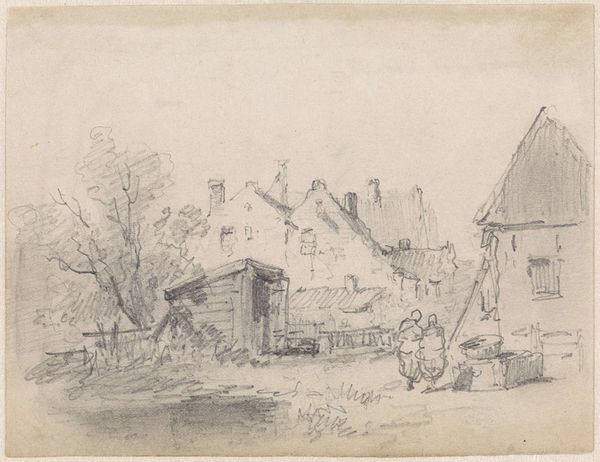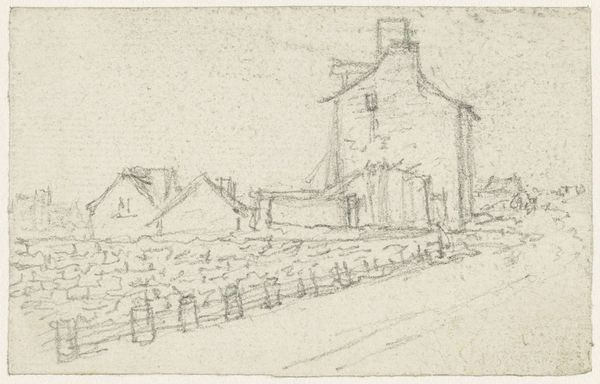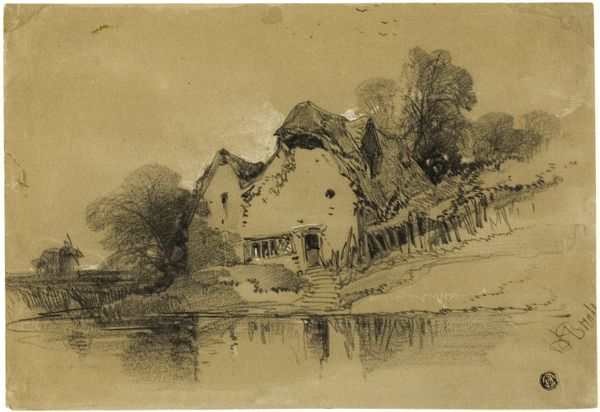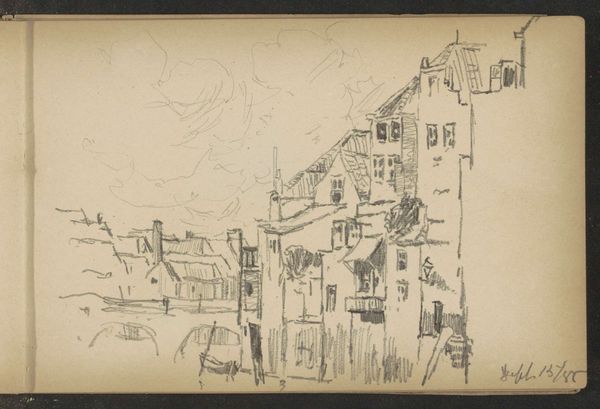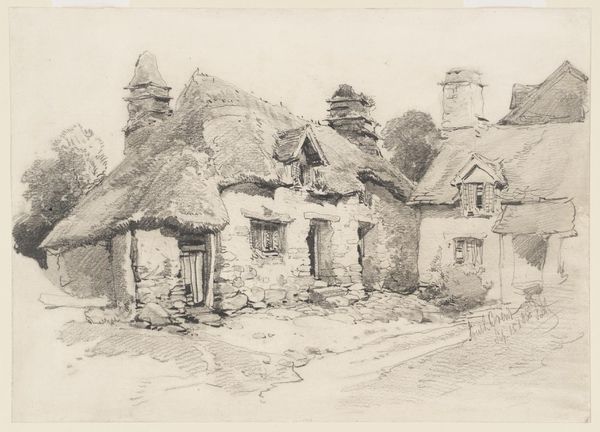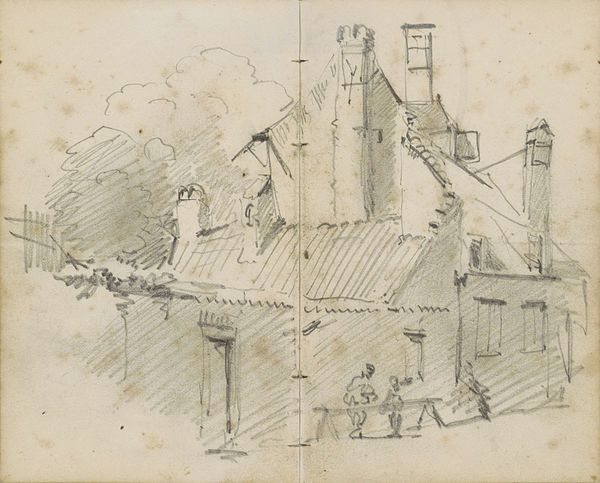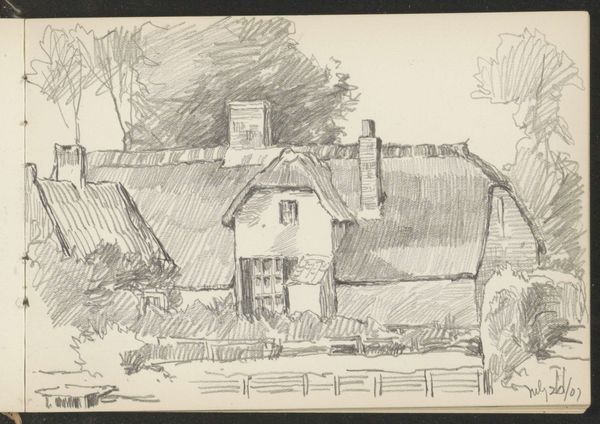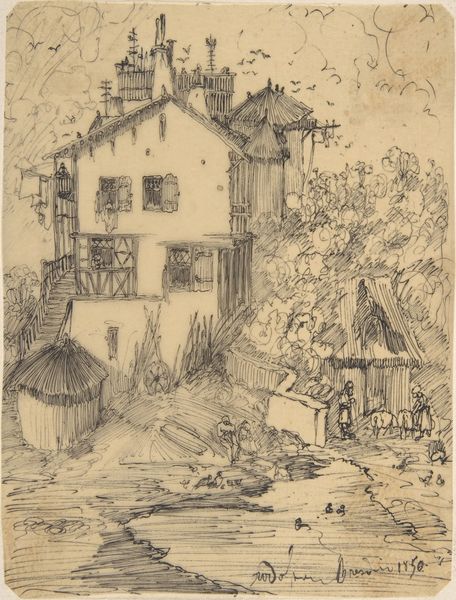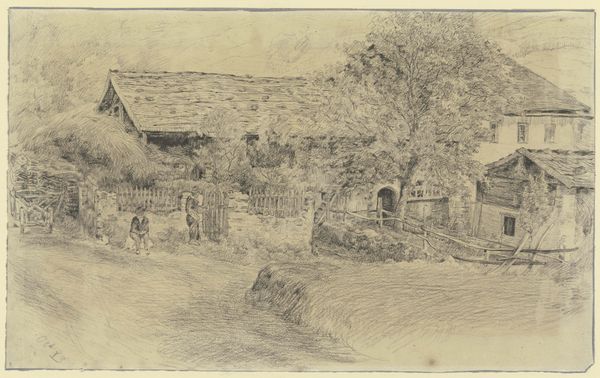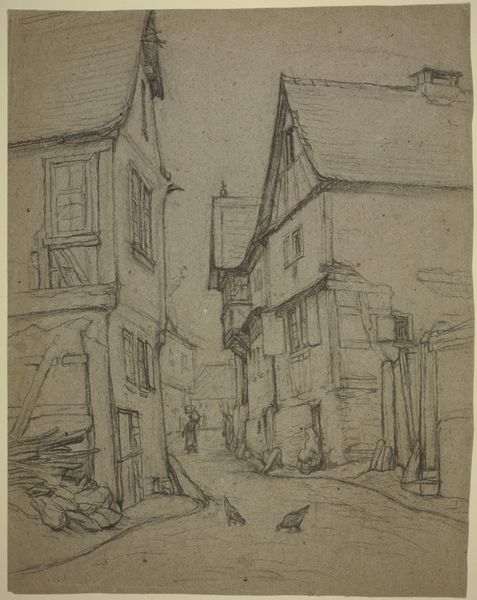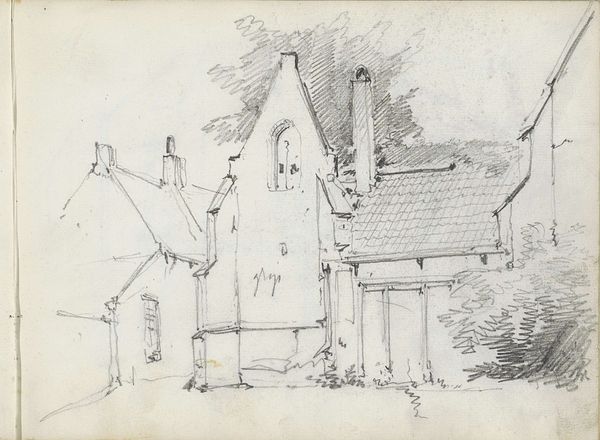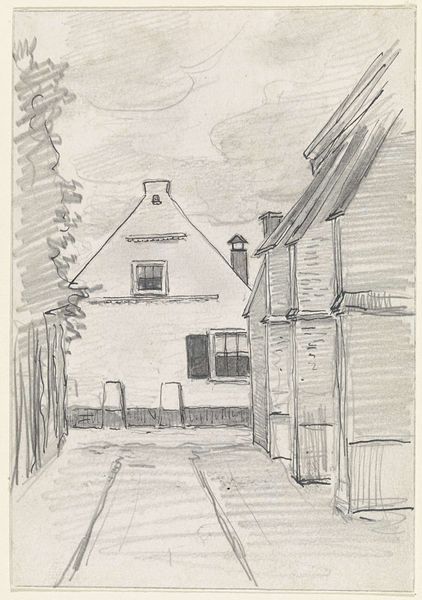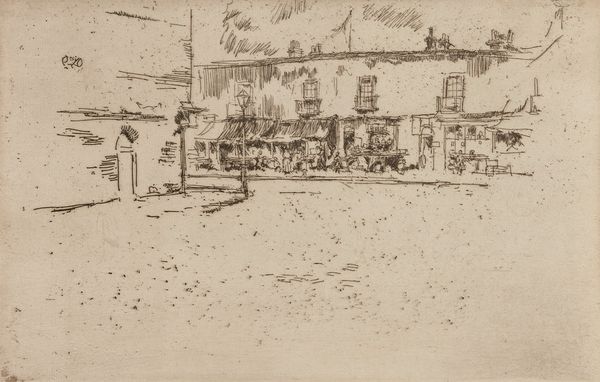
drawing, print, ink
#
drawing
#
16_19th-century
# print
#
landscape
#
ink
#
realism
Dimensions: sheet: 12.7 x 18.1 cm (5 x 7 1/8 in.)
Copyright: National Gallery of Art: CC0 1.0
Curator: Here we have Eugène Isabey’s "Two Cottages," a drawing and print created circa 1844. What strikes you about this piece? Editor: Initially, the textural contrast grabs me. The rough, almost frantic hatching used to render the thatched roofs sits starkly against the smoother walls. There's a tension there. Curator: Isabey was working during a time of great social upheaval in France. Rural life was increasingly romanticized even as people migrated to cities. Do you think this drawing idealizes country dwellings? Editor: I see less idealization and more realism, in a certain sense. The quick, somewhat messy linework suggests observation rather than embellishment. Note the sagging roofline, the uneven walls – these details point to a grounded perspective. It is art mimicking unembellished daily existence in these houses. Curator: Perhaps, but let's consider the absence of people. The cottages are presented almost as relics, testaments to a vanishing way of life replaced by factories and mass society. Could the choice of representing landscape rather than people represent their status and social standing at the time? Editor: That's a compelling point. And looking closer, I appreciate how Isabey uses the negative space, the blankness of the paper, to convey a sense of vastness and isolation, especially behind the cottages. Curator: Isabey was deeply involved in the Romantic movement and sought to find and represent the impact of the transformations around him on the old world. His position in a historical context brings his intent more clearly. Editor: Indeed, thinking about it within that socio-historical context adds depth. Even the medium - a relatively reproducible print - suggests a desire to disseminate this vision widely. Curator: Understanding that socio-political purpose illuminates the piece. What seemed initially to me to be an ordinary study of landscape and rural housing could stand as an indictment against his society for what it was putting in danger. Editor: From my point of view, observing these textural dichotomies is compelling, while considering your take and insights also adds to my comprehension. I initially appreciated it on a strictly visual level but I recognize the need to step back to better assess the work.
Comments
No comments
Be the first to comment and join the conversation on the ultimate creative platform.
